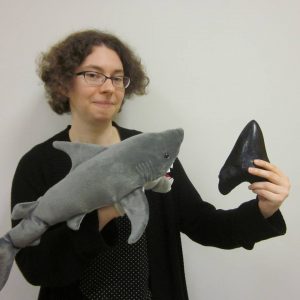
As a museum educator, do you ever feel forgotten? Feel as though your expertise was relegated to the tail-end of exhibition planning? Do you wish museum education played a larger leadership role at your institution? In this blog post, I would like to share with you reasons why you, as a museum educator, have the skills to take on a greater leadership role, and a few tips on how you can achieve this.
Like Liam Neeson in Taken, museum educators have a very particular set of skills. These same skills that make us great at helping our guests engage with museum objects also benefit the institution as a whole. I discovered this for myself when I was invited to be involved in a collaborative exhibition between my museum’s three major disciplines. Originally, my role as museum educator was to be aware of the exhibition so I could quickly design the accompanying school tour. However, as the exhibition development process unfolded, my colleagues and I discovered that my involvement could be something greater. I took on the role of design discussion facilitator.
I found that there are several reasons that my skills as a museum educator were transferrable to this role:
- We are facilitators. Every day we guide our visitors into constructing meaning with museum objects through questions, discussions and creative activities. We don’t need to limit ourselves to just doing that with our guests – we can benefit our institutions internally, too.
- We see the big picture. Curators focus on their content area. We often need to be proficient across an entire museum. We can use that to facilitate connections.
- We’re audience advocates. While your situation may be completely different, I am nowhere close to being a content expert on my curators’ fields of study. While I have my own experiences, biases and background to be aware of, I’m slightly more removed from the content than they are, so I perceive the exhibition closer to what our audience will.
Once our team and I realized the value of including museum education in this process, how did they include me more? Well, I used one of the same tools I use when leading tours: the power of well-designed questions. I’d help facilitate our discussions with questions like:
- “What is the one thing you want our guests to take away from this exhibition?”
- Our curators intrinsically know the answer to this question, but forming it into one or two sentences can help clarify the exhibition’s focus, and it makes sure everyone involved in the design process has the same intent. This “big idea” can guide your exhibition; each artifact, label and hands-on activity should support or add to this “big idea”.
- “Why are you passionate about this exhibition topic? What artifacts/artworks/museum objects are you especially excited for in this show?”
- Curators have a breadth and depth of knowledge in their subject fields that is astounding. This question helps me to understand why they care so strongly about the topic. Then, we work together to convey that “magic” to our audiences.
- “What themes are present in the exhibition? Can we connect a wide variety of museum objects under a bigger theme in order to help our audiences go deeper on the topic?”
- This question is especially helpful if your exhibition includes multiple disciplines.
- “Whose story are we telling?”
- And, just as important, whose stories aren’t we telling? Do the museum objects we have naturally tell the story of just one or two groups? How can we accurately represent our community and foster discussion?
Like all changes, integrating museum education into the design process has had its up and downs. However, the collaborative nature of our design process has increased and created some really exciting ideas. Since that first exhibition, the museum education department has participated in the design process of other exhibitions, large museum events, and our calendar planning process for the coming years. I have found that I very much enjoy being involved in this greater capacity, and I believe that my colleagues enjoy having me there as well.
I would like to take a moment to thank Mary Bower, Tom Lonnberg and Mitch Luman, my fellow curators, and of course Bryan W. Knicely, our executive director, for welcoming museum education into this bigger role. It is a joy working with them every day.
My piece of advice for you if you work at an institution that isn’t as encouraging? Offer to help your colleagues. Ask to attend the meetings. Find articles that list examples of successful collaborations and send them to your coworkers. Suggest grants that require museum education components. It won’t happen overnight; just keep trying.
As museum educators, we can bring great benefits to our institutions. I am excited to hear about your endeavors in this pursuit.
Karen Malone is the Ruby C. Strickland Curator of Education at the Evansville Museum of Arts, History & Science in Evansville, IN. She holds a MS degree in Museum & Field Studies from the University of Colorado Boulder. Her passion is helping museums engage with their audiences by creating opportunities for life-long learning. You can reach out to her at karen@emuseum.org









Thanks for sharing such useful blog commenting sites.Booth Design HK